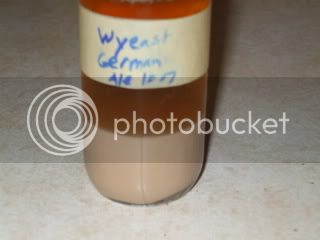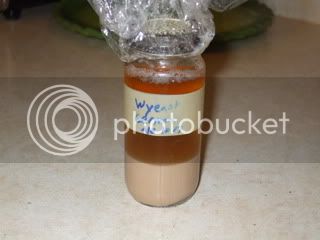I have been trying to think of ways to revisit collecting yeast. Yeast washing has never been very successful for me. I mean, I guess it is in the sense that I collect enough yeast that when I need it I can make a starter and it will grow into a big enough colony to ferment my beer properly, but I can't help but feel I am also collecting a lot of dead yeast cell and other gunk that resides in the trub. My collection of yeast is never a pure white like you see with a fresh vial of yeast. It always has a hint of trub color.
What I am wondering is if there is a better way. What about essentially krausening a starter? Hear is what I am proposing: You take your vial of yeast, make a starter as normal, and add it your batch of wort as normal. Then a couple of days later, when the yeast have completed their growth phase and are vigorously fermenting the wort, take an amount of that beer and put it in your starter jar with some more dextrose/dme/whathaveyou. If my thinking is correct, the remaining yeast would then go through another growth phase, ferment the new starter and then go dormant. I would imagine this would take a couple of days. After going dormant, you can chill the concoction to get the maximum flocculation of the yeast and transfer off to your yeast container. I see the advantages of this as you would certainly be collecting healthy, viable yeast, and you would be collecting less dead cells, and trub in general.
I question though how much wort one would need to collect to do this though? A pint? a cup? More? Less?
Anyone tried this, or heard/read about this? Sound worthwhile, or should I just not fix what is not broken? l
What I am wondering is if there is a better way. What about essentially krausening a starter? Hear is what I am proposing: You take your vial of yeast, make a starter as normal, and add it your batch of wort as normal. Then a couple of days later, when the yeast have completed their growth phase and are vigorously fermenting the wort, take an amount of that beer and put it in your starter jar with some more dextrose/dme/whathaveyou. If my thinking is correct, the remaining yeast would then go through another growth phase, ferment the new starter and then go dormant. I would imagine this would take a couple of days. After going dormant, you can chill the concoction to get the maximum flocculation of the yeast and transfer off to your yeast container. I see the advantages of this as you would certainly be collecting healthy, viable yeast, and you would be collecting less dead cells, and trub in general.
I question though how much wort one would need to collect to do this though? A pint? a cup? More? Less?
Anyone tried this, or heard/read about this? Sound worthwhile, or should I just not fix what is not broken? l




